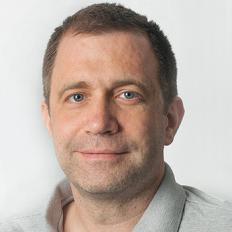- Speaker
- Prof. Dimitrie Culcer
- School of Physics, University of New South Wales, Australia
- Abstract
Electrical control of quantum bits could pave the way for fast, low-power, scalable quantum computation. I will demonstrate that an acceptor spin qubit in Si, based on holes rather than electrons, offers full electrical control, fast operations and long relaxation and dephasing times. The primary limiting factor is the relaxation time T1, rather than the dephasing time T2. At first sight, this appears difficult to enhance if fast operations are desired using purely electrical means. However, I will show theoretically that the orientation of an applied in-plane magnetic field acts as an additional control parameter that can strongly enhance the performance and coherence properties of this quantum computing architecture: two-qubit operations are fully tunable and spin relaxation can be almost entirely suppressed in a parameter regime in which dephasing due to charge fluctuations can be eliminated. This tunability, as well as the strong coherence properties of the qubit, stem from the interplay of the Td symmetry of the acceptor in the Si lattice and the spin-3/2 characteristic of hole systems. These findings can be directly translated to ongoing experimental work on acceptor spin qubits, in which I will show that a decoherence-free subspace can be realized at special magnetic field orientations.
- About the Speaker
Dimitrie Culcer obtained his PhD from the University of Texas at Austin in 2005. He worked as a postdoctoral research fellow first at Argonne National Laboratory between 2006-2008, and subsequently at the University of Maryland, College Park, 2008-2010. He became a faculty member at the University of Science and Technology of China in Hefei in 2010, where he was a member of the International Center for Quantum Design of Functional Materials. In 2013 he moved to the School of Physics, University of New South Wales in Sydney. Dimitrie Culcer’s research interests include quantum information and computation, spin-orbit coupling and topological effects in condensed matter physics, quantum transport theory and electron-electron interaction effects, in particular the interplay of interactions with strong spin-orbit coupling. He is actively working in all these areas.
- Date&Time
- 2017-11-22 3:00 PM
- Location
- Room: A303 Meeting Room




